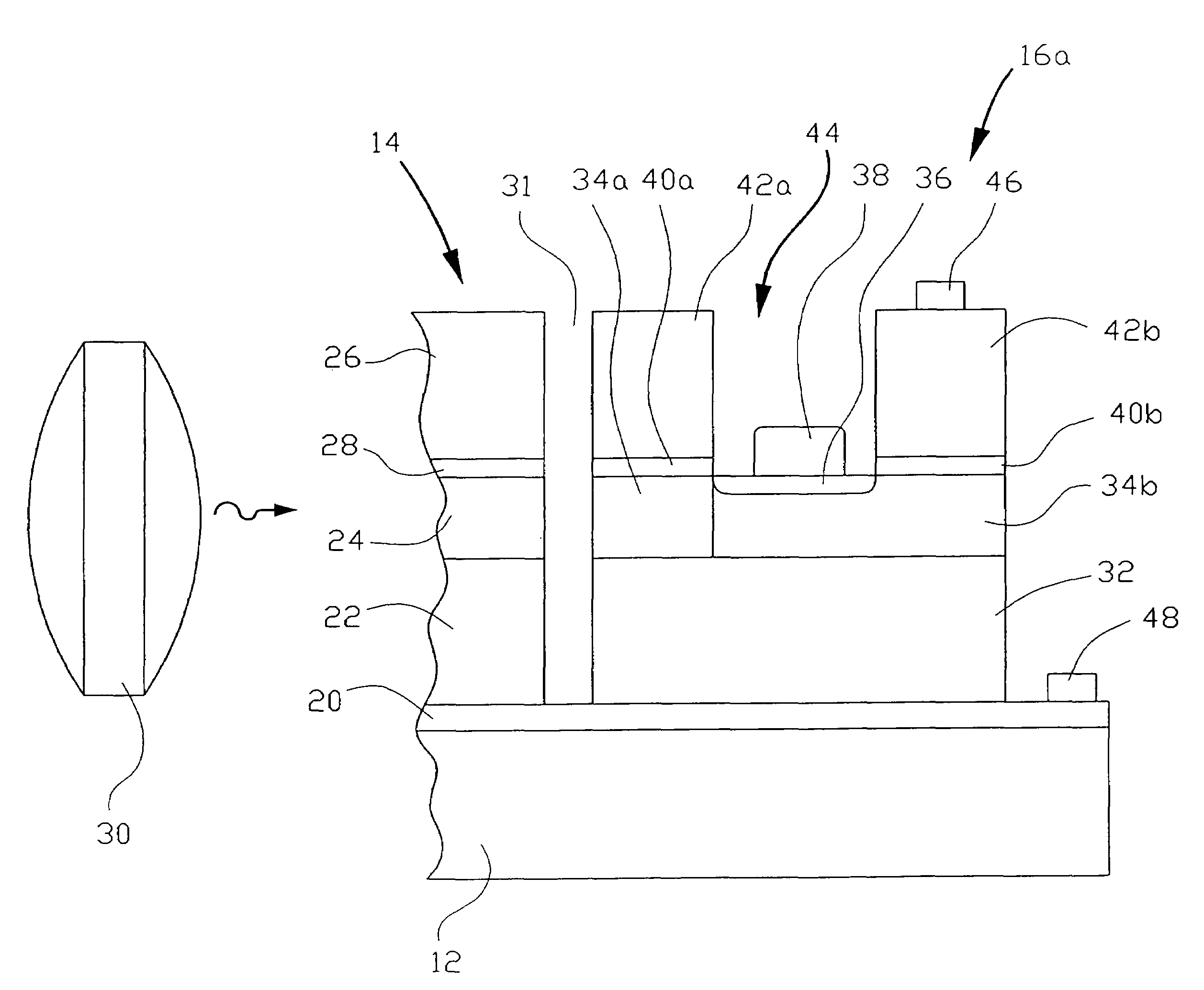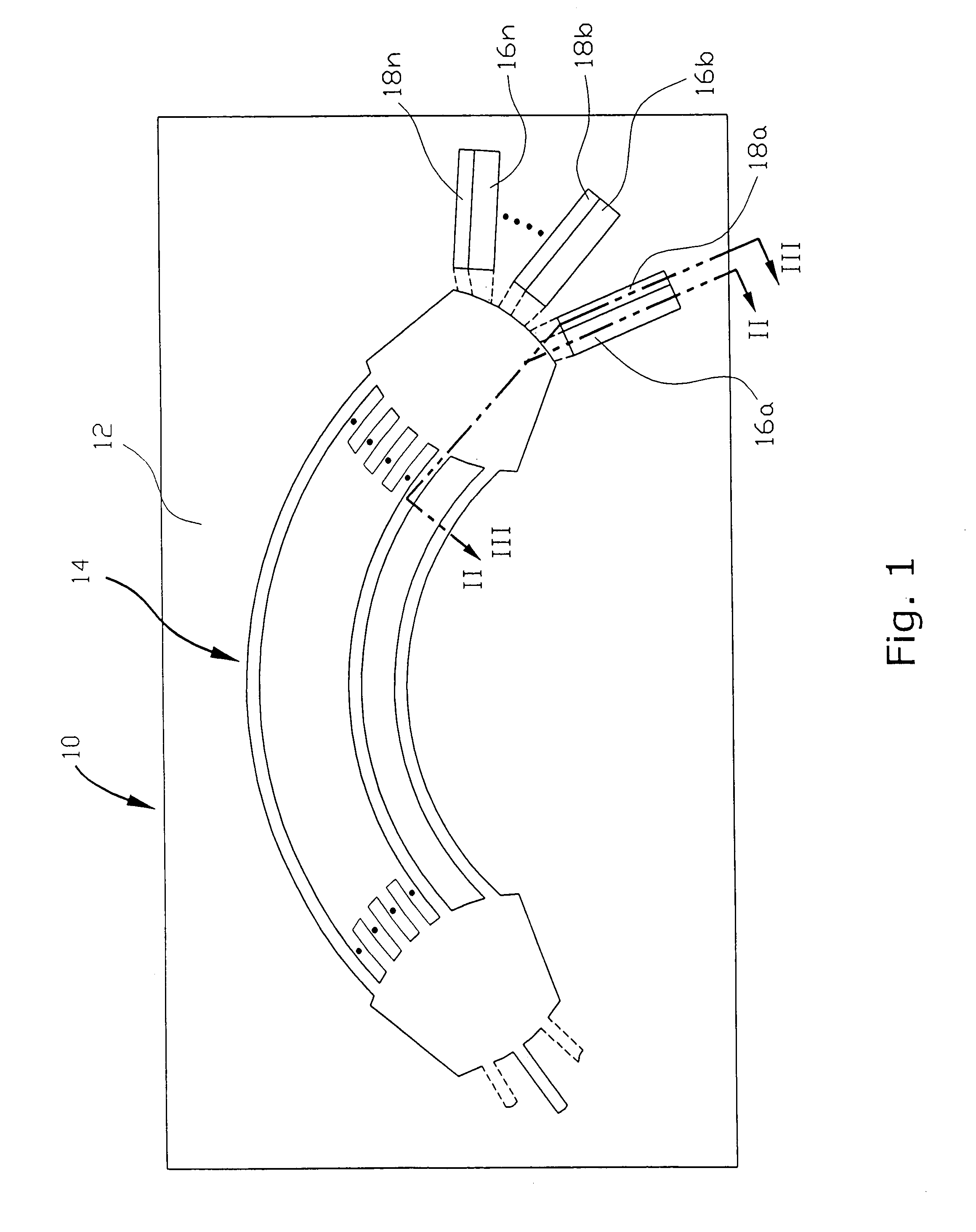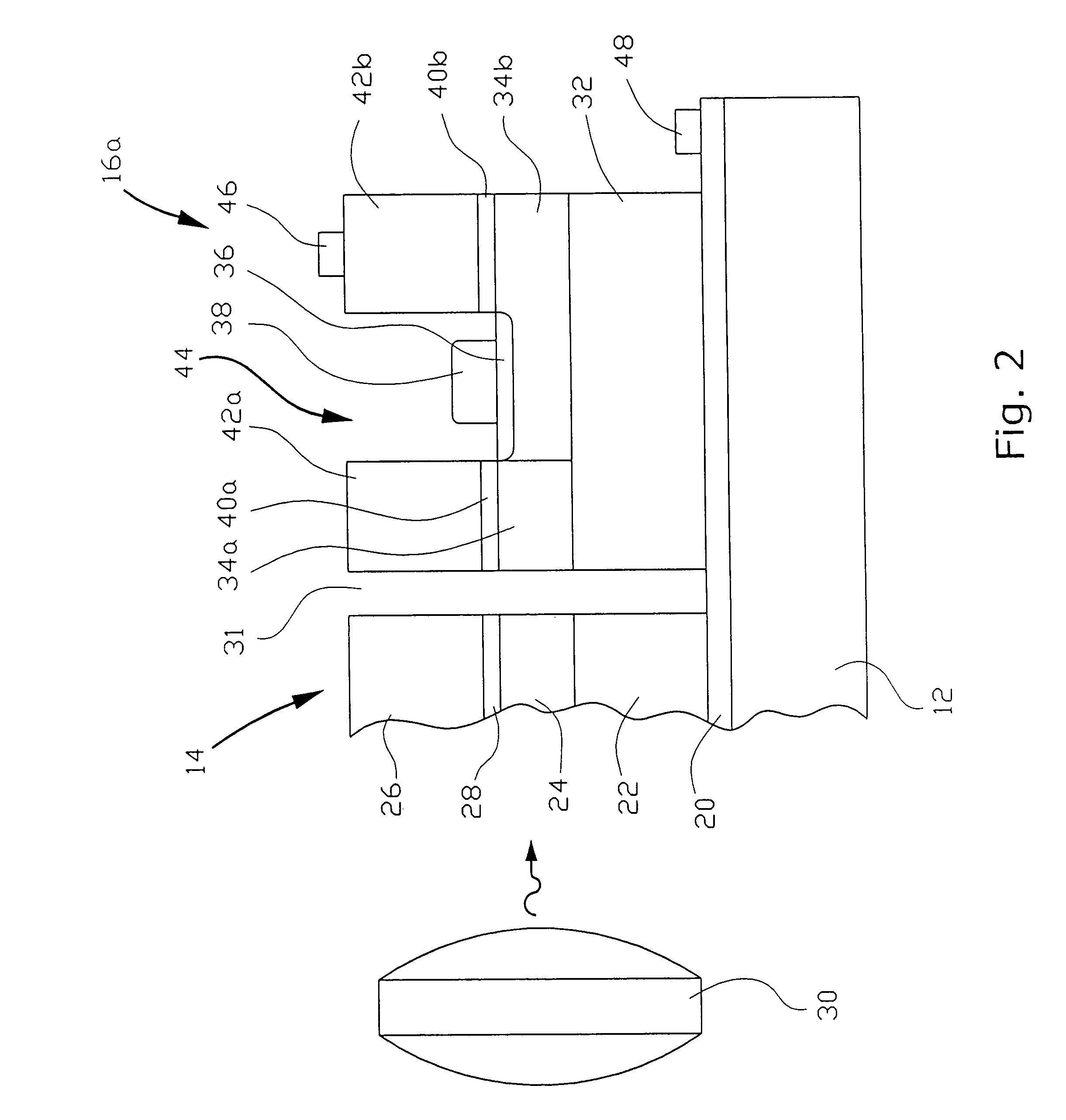Integrated demultiplexer/photoreceiver for optical networks and method of controlling transparency of optical signal transmission layer
a technology of optical signal transmission layer and optical network, applied in the field of semiconductor devices, can solve the problems of difficult optical alignment, limited number of optical channels, high manufacturing cost, etc., and achieve the effect of simplifying design, improving optical alignment conditions, and reducing cos
- Summary
- Abstract
- Description
- Claims
- Application Information
AI Technical Summary
Benefits of technology
Problems solved by technology
Method used
Image
Examples
Embodiment Construction
FIGS. 1–6C—Embodiment of the Device of the Invention wherein Transparency of the Optical Signal Transmission Layer of WGR is Controlled by Selectively Doping the Multiple-Layer Structure of the WGR
[0020]An integrated demultiplexer / photoreceiver of the present invention, which as a whole is designated by reference numeral 10, is shown in FIG. 1, which is a general top view of the device. It can be seen that the integrated demultiplexer / photoreceiver 10 (which hereinafter will be referred to as IDP) consists of the following three basic components formed on a common substrate 12: a waveguide grating routing (WGR) 14, an array of photodetectors 16a, 16b, . . . 16n, and an array of transistors 18a, 18b, . . . 18n located on the sides of the respective photodetectors 16a, 16b, . . . 16n.
[0021]As in any IDP, which incorporates a WGR as a demultiplexing component, the WGR 14 is used to demultiplex the incoming multiwavelength optical signal and to direct the individual optical channels to...
PUM
 Login to View More
Login to View More Abstract
Description
Claims
Application Information
 Login to View More
Login to View More - R&D
- Intellectual Property
- Life Sciences
- Materials
- Tech Scout
- Unparalleled Data Quality
- Higher Quality Content
- 60% Fewer Hallucinations
Browse by: Latest US Patents, China's latest patents, Technical Efficacy Thesaurus, Application Domain, Technology Topic, Popular Technical Reports.
© 2025 PatSnap. All rights reserved.Legal|Privacy policy|Modern Slavery Act Transparency Statement|Sitemap|About US| Contact US: help@patsnap.com



